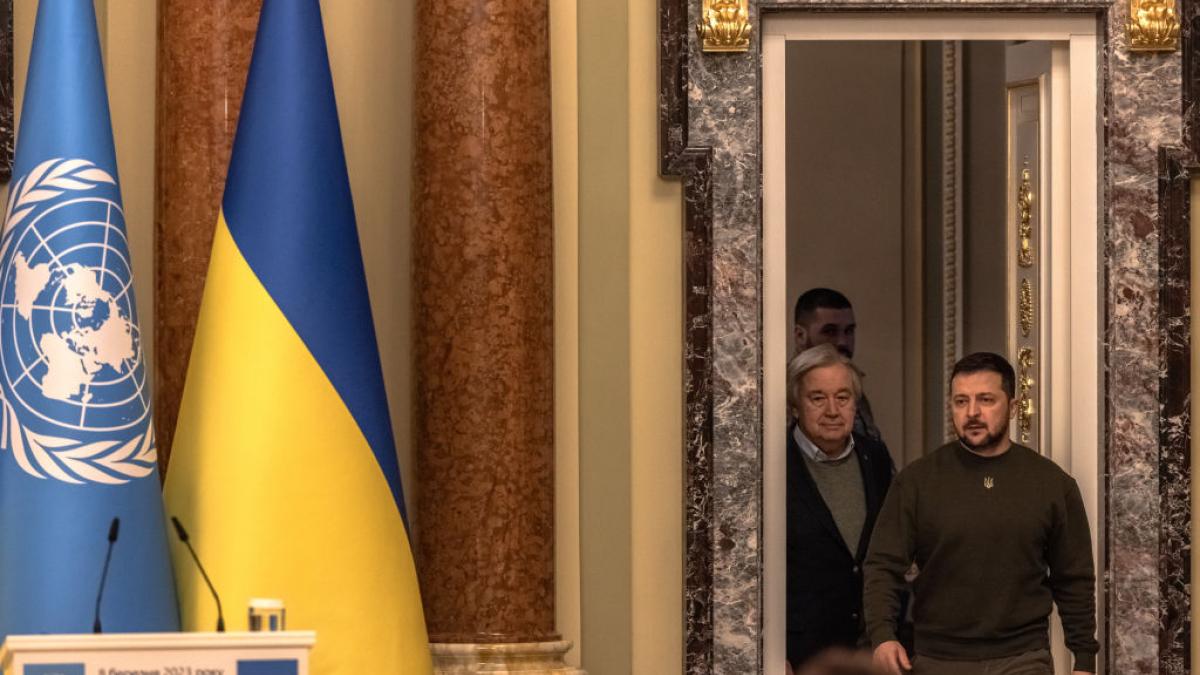Nicolas Véron

Efforts by the United States, Europe, Japan, South Korea and other developed economies to rally the world against Russia over its invasion of Ukraine have met with only partial success. Many countries have declined to go along with the imposition of sanctions on Russia and some recent commentary has implied that the ‘Global South’ has adopted a neutral position in the conflict (see for example here, here and here). That is indeed the case for China and India, the Global South’s two economic and demographic heavyweights. But votes at the United Nations General Assembly (UNGA), which in late February adopted a resolution demanding an end to the war and an immediate Russian withdrawal, indicate that the rest of the Global South actually leans towards supporting Ukraine.
For simplicity, the ‘Global South’ is here defined based on gross domestic product per capita, using GDP at market exchange rates estimated by the World Bank (see note to Figure 1). All countries with 2021 GDP per capita above $15,000 are considered part of the ‘Global North’, with the addition of EU members Bulgaria and Romania (GDP per capita $12,221 and $14,858 respectively). Under that definition, both Russia and Ukraine are in the Global South, as are China and India. Conversely, some geographically southern countries including Chile and Uruguay are classified as part of the Global North under this GDP per-capita criterion. Thus defined, the Global South represents 85% of the world’s population, and nearly 39% of global GDP.
Each country’s position on the Russo-Ukrainian war is determined on the basis of its UNGA vote on 23 February 2023, the outcome of which was broadly similar to those of UNGA votes on Ukraine in 2022. While specific motivations may vary, it is natural to classify votes in favour of the resolution, which demanded that Russia “immediately, completely and unconditionally withdraw all of its military forces from the territory of Ukraine,” as favouring Ukraine, and those against it as favouring Russia. The other two options – abstentions and no-shows – are bundled together as signalling neutrality.
The resulting picture is of unanimity of the Global North: its 53 countries all approved the resolution. By contrast, the 136 countries of the Global South embraced a range of positions, with China and India both being neutral.
The pro-Ukraine camp represents almost two-thirds of the Global South’s countries, and more than a third of its population. In terms of GDP, neutral China dominates the Global South with nearly half of the total, but the pro-Ukraine camp, which includes large countries such as Brazil, Indonesia, Mexico, Nigeria and the Philippines, makes up more than half of the rest.
All things being equal, a country’s support for Ukraine is somewhat correlated with its wealth. But here too, the reality is nuanced. Figure 2, based on the ranking of all UN countries (including those in the Global North) by GDP per capita, illustrates this. All countries in the fourth (richest) quartile voted in favour of the UNGA resolution. But a majority did so in the other three quartiles as well, albeit only by a tiny margin in the first (poorest) quartile. Because of the outsize impact of the world’s two most populated countries – both neutral – the share of the pro-Ukraine vote is actually higher in the first quartile than in either the second (which includes India) or the third quartile (which includes China), in terms of both population and GDP.
There is no question that the comparatively rich countries of North America, Europe and East Asia are more engaged on the side of Ukraine than most of their peers in the Global South, even among those that supported Ukraine at the UNGA, as a February 2023 opinion poll has documented. Strikingly, financial sanctions have been imposed on Russia by all ten richest jurisdictions of the Group of Twenty, and by none of the ten poorer G20 countries. Even so, it would be inaccurate to play down the significant level of support that Ukraine keeps receiving from many of the world’s less-wealthy countries.
No comments:
Post a Comment